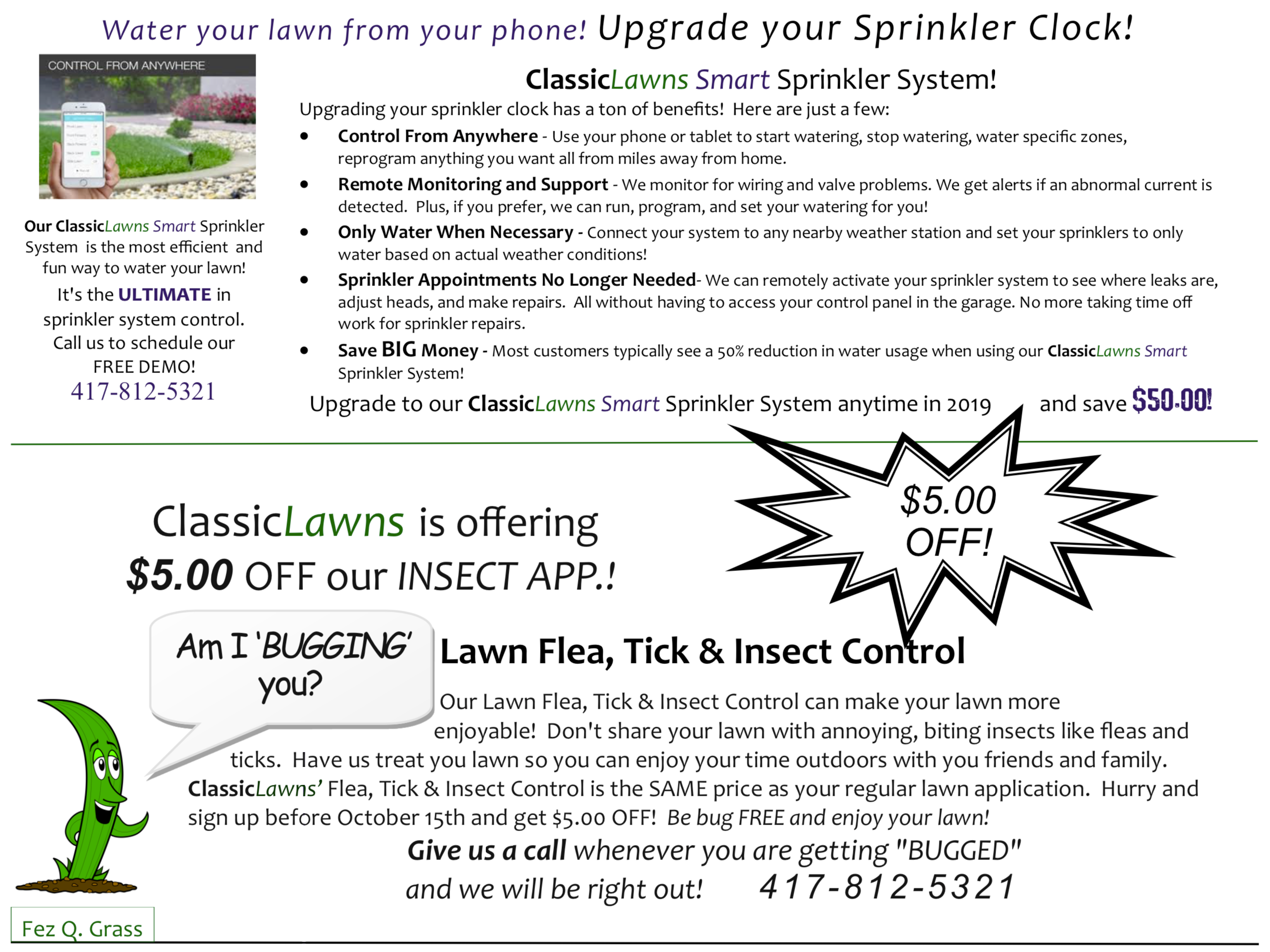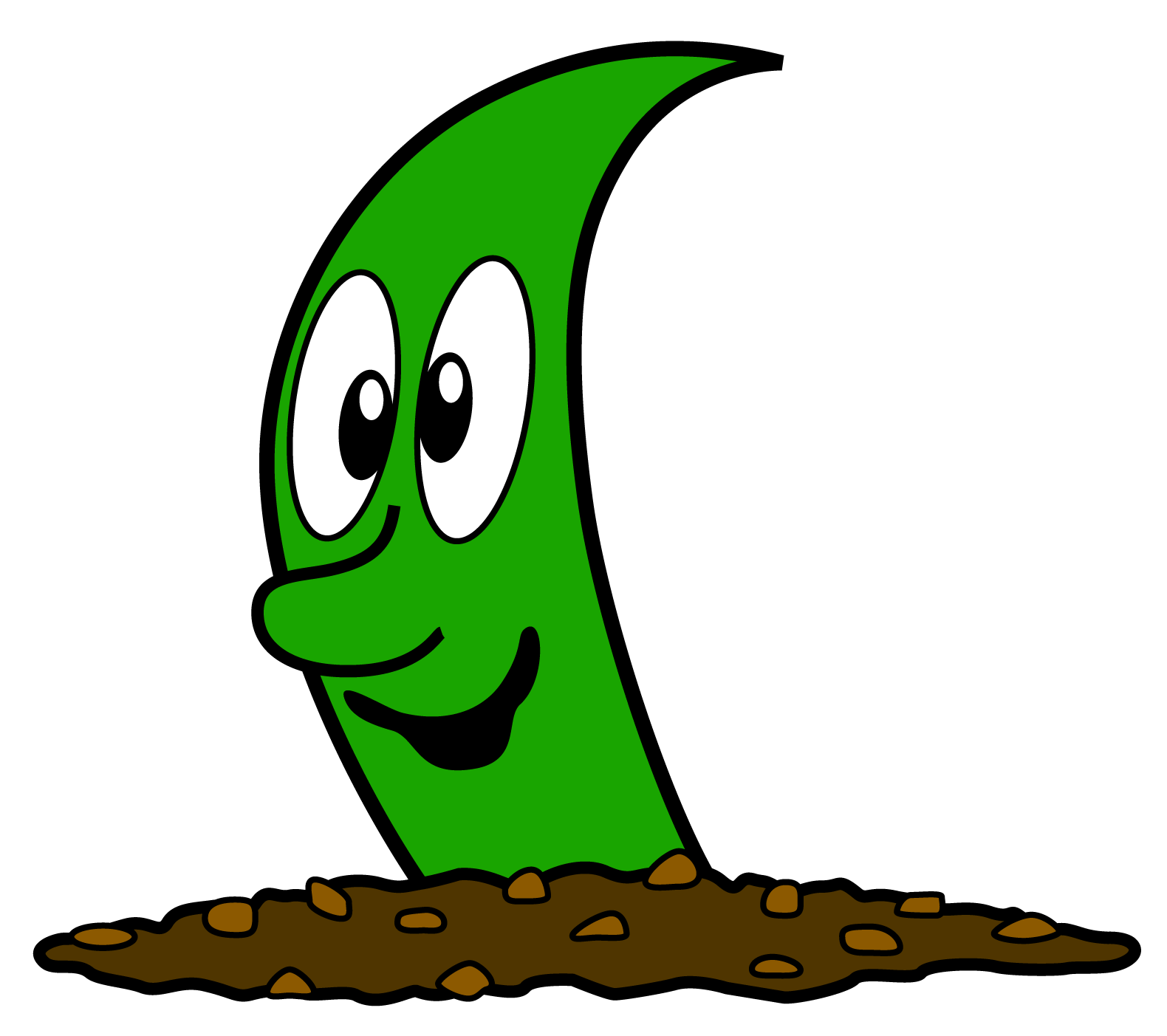















Book Your ClassicLawns SEEDING SERVICE.
Contact Us Today!
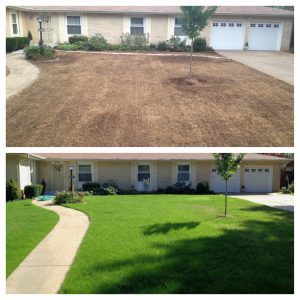
SEEDING. The CLASSICLAWNS WAY!
Today we left you a quote for seeding your lawn. The best time to seed is September 1st through October 25th. The earlier the better. Please look over our recommendations for seeding your lawn. We get asked many questions about seeding. In this newsletter we hope to answer some of these questions. If you think of any other questions, please give us a call!
Why You Should Seed
The best looking lawns are the lawns that are over seeded on a regular basis. Over seeding is the best way to a thick, full, and healthy lawn! The ClassicLawns seeding process gives excellent results that we guarantee. We often are asked, “How often should I seed my lawn?” Most universities' turf programs recommend over seeding every 3– 5 years. While we agree with this, our summers are tough on grass here in the Midwest and it may be necessary to seed a little more often. In fact, we get the best results when we seed back to back years. Then seed every 3 years or as needed.
What Seed Do You Use
We only use the best premium turf-type tall fescue seed on our lawns. Turf-Type Tall Fescue is the best grass suited for our Midwest weather. It has a deep root system, a nice dark green color, is more drought tolerant and disease resistant, and germinates as quick as 7 days. We insist that our seed has no weed seed and no crop seed. It costs more, but it is worth it! The seed industry is constantly evolving. Every year there is a better seed that has a better color, is more disease resistant, and is more drought tolerant. This is one of the many reasons you should seed regularly. If you have not seeded in the last two years, there is a much better grass seed than what you currently have in your lawn.
Our Seeding Methods
Basically, there are 3 methods we use to seed lawns. Core Aeration and Over Seeding, Over Seeding and Verticutting, and Core Aeration, Over Seeding and Verticutting. Part of the ClassicLawns seeding process is evaluating your lawn and determining the best method of seeding to give you the best results. When quot- ing seeding we consider things like soil condition, soil compaction, the amount of sunlight, the traffic your lawn receives, your watering capabilities, and how much thatch you have in your lawn.
Which seeding method we use is determined by these conditions.

Call ClassicLawns today to schedule your seeding!
LAWN CARE SCHEDULE
FEB/MAR/APRIL
Fertilizer + Grassy Weed Preventer
APR/MAY
Fertilizer + Grassy Weed Preventer Mowing Reducer
MAY/JUNE/JULY
Fertilizer + Grub Control
JULY/AUGUST
Summer Weed Control
SEPT/OCT
Fall Fertilizer Fall Seeding
NOV/DEC
Winterizer
NOV/DEC/JAN
Soil Amendments Dormant Seeding

A core aeration is one of the best “extras” that you can do for your lawn. A core aeration is the process of removing cores 1/2” in diameter and 3”-4” long from the lawn. This process helps loosen clay, compacted soils, aids in controlling thatch and allows air, water, and nutrients to reach the root system easier.
We have horrible soil here in Springfield and a core aeration is the best way to improve our soils. Ideally, we believe you should core aerate your lawn at least once a year. Golf courses aerate their greens once a month. All we ask is once a year! Unlike some companies core aerations, ClassicLawns does a double pass heavy core aeration every time with cores at least 3” long... usually longer. Your neighbor from across the street will know you have had your lawn aerated.
The Benefits of Core Aeration
-
Breaks Through Compacted Soil Layer
Soil compacts in the top two inches. A Core aeration penetrates this compacted layer reducing soil compaction.
-
Keeps Thatch From Growing
The cores pulled from the soil contain bacteria and enzymes that aid in the decomposing of thatch. 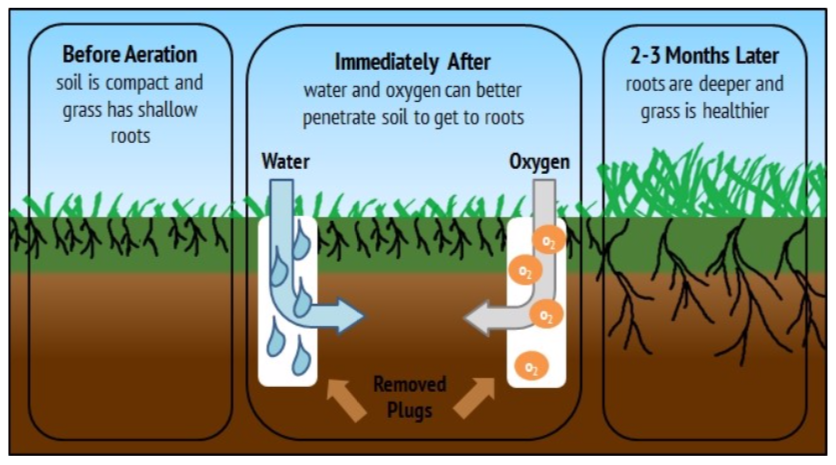
-
Allows More Efficient Watering & Fertilizing
The holes produced provide natural channels for water and fertilizer to enter into the root zone.
-
Helps Roots Penetrate Deeper Into the Soil
The added air and water movement will stimulate the roots to penetrate deeper into the soil.
-
If Seeded, New Grass Will Grow In Holes
The hole created by the plug provides a perfect bed for the new seed to grow. Plus, you virtually guaranteed seed will germinate in the aeration holes no matter how poorly you water!
Seeding with a Core Aeration
Now that you know the incredible benefits of core aeration, let’s talk about seeding with your core aeration. We most likely recommend that we do some seeding with the core aeration. We may have suggested spot seeding as needed or a complete over seeding of you lawn. Which one depended on how thick or thin your lawn was. If your lawn was a little thin and had a few poor/bad areas we probably just recommended spot seeding as needed. If we considered your lawn to be thin or if it had disease problems, we probably suggested over seeding the entire lawn.
For any seed to geminate it has to have good seed to soil contact. The holes made with core aeration make a great bed for seed to land in. Plus, the plugs of dirt that are pulled up fall back over the top of the seed. This is almost a guarantee that seed will succeed in every aeration hole!

Over seeding and verticutting is one of the best ways to a thick, full lawn! We apply our premium turf-type tall fescue seed. Then, we use a verticutter like the one on the left to make grooves or lines for the seed to fall into. A verticutter is a machine that looks like an over grown push mower, but instead of horizontal blades a verticutter has rows of vertical blades about 2” apart that cut grooves into the lawn. Seed falls into these grooves and gives us great seed to soil contact and the new grass comes up in nice rows.
Why Verticut Instead of Doing a Core Aeration?
If your lawn is very thin, verticutting and over seeding is going to be a better option. With a core aeration the seed mostly comes up only in the aeration holes. This results in a clumpy look that is not very appealing in thin lawns. Over seeding and verticutting results in a much thicker and even growth of new grass especially in thinner lawns. We overlap every pass with the verticutter so that when we are done you get double the grooves in the lawn for seed to come up in.

For Best Results, COMBINE Core Aeration with Verticutting and Over
Seeding!
To get the absolute best results combining a core aeration with verticutting and over seeding is the way to go! Again, to get the best results from your seeding you must have good seed to soil contact. This is the best way to accomplish just that. The extra soil brought up from the core aeration plugs covers the new seed and creates a perfect bed for your seed to germinate.
Why Turf-Type Tall Fescue is
Better Than Bluegrass: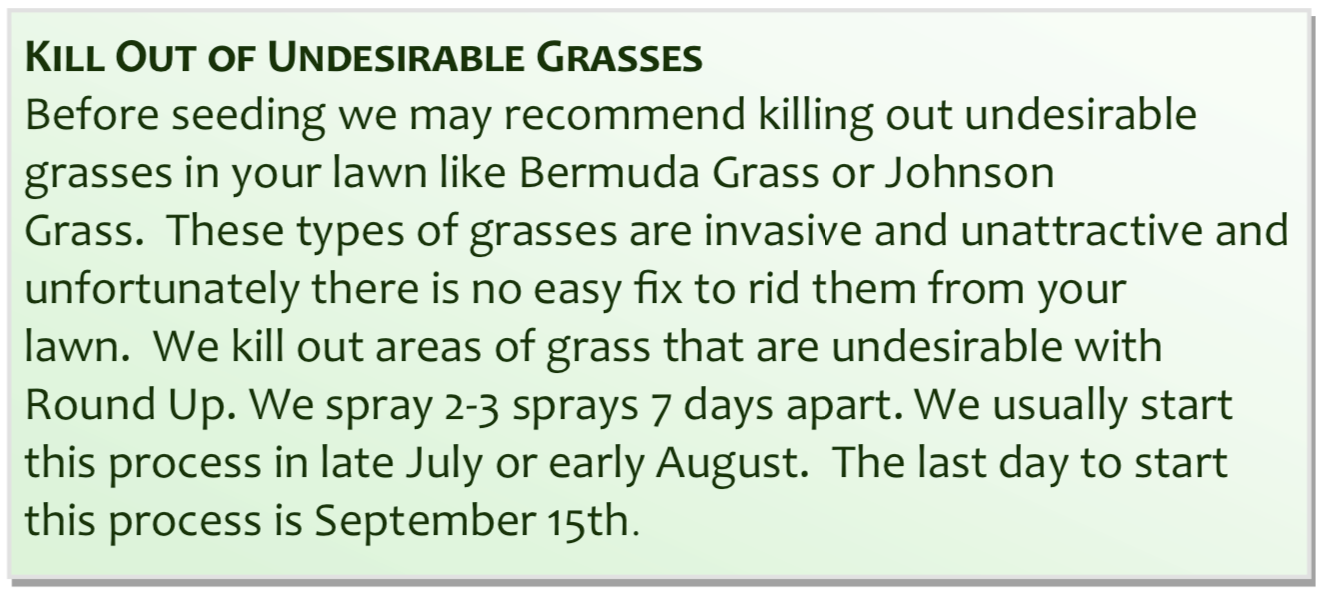
- Tolerates heat and dry weather better.
- Has fewer disease problems.
- Fewer problems with thatch and insects.
- New varieties are even darker green than bluegrass


